230201 1L2L0X0A_(I), http://farbe.li.tu-berlin.de/AEHI.HTM or
http://color.li.tu-berlin.de/AEHI.HTM
For this main page with general information and special images
of the corresponding image page with 10 colour series, see
AEHI in English,
AGHI in German.
For the previous main page, see
AEGI in English,
AGGI in German.
For the next main page, see
AEII in English,
AGII in German.
For links to the chapter A
Colour Image TechnoloGL and Colour Management (2019), see
Content list of chapter A:
AEA_I in English or
AGA_I in German.
Summary of chapter A:
AEA_S in English or
AGA_S in German.
Example image part of 26 parts AEAS to AEZS:
AEAS in English or
AGAS in German.
Chapter A: Colour Image Technology and Colour Management (2019),
Main part AEHI
1. Introduction and goals.
There are different devices und reflections of the ambient light
on the display in the area of image reproduction.
The colour of any display system are different, for example
the display system sRGB according to IEC 61966-2-1,
and the display system WCGa (Wide Colour Gamut) according to ETU-R
BT.2020-2.
ISO 9241-306:2018 defines eight contrast steps
for the standard sRGB display. For example:
1. eight lower contrast steps between black and white
n the Low Dynamic Range (LDR), and
2. eight higher contrast steps between black and white
in the High Dynamic Range (HDR).
ISO-test charts for these applications are available, see for example
http://standards.iso.org/iso/9241/306/ed-2/AE49/AE49F0PX.PDF
for LDR and
http://standards.iso.org/iso/9241/306/ed-2/AE49/AE49F0NX.PDF
for HDR.
According to the output questions for the page with 1080 colours
any user can determine one of the eight pages by the visual criteria
approximately equal spacing of the grey and colour scales.
Usually this is a page of the LDR (Low Dynamic Range) series.
However, in a dark room with no or very low ambient reflection
(<1% compared to white 100%) on the display, then a page of the
HDR (High Dynamic Range) series may produce the best output
by the above visual spacing criteria.
For an ergonomic output on displays it is required to reduce
the fatique of users.
Equal colours steps without clipping are often essential
for many applications.
The colours and the output on page 1 of the above two ISO files is equal.
The output shall be equally spaced at least at standard work places.
If this is not the case, then section AEGI
shows solutions.
The reflection on any matte surface is about 3,6% compared to white 90%.
The standard ambient reflection in standard offices is 2,5% and equal as
a standard semi glossy offset paper according to ISO/IEC 15775.
Allready the standard reflection 2,5% with the contrast range
YW : YN = 90 : 2,5 = 36 : 1
reduces the CIELAB lightness range between L*=0 and 95 (Delta L*=95)
to L*=18 and 95 (delta L*=77).
The CIELAB chroma range decrease similar. Both reductions reduces the
colour gamut by about a factor 0,81 times 0,81 or from 100% to 65%.
This reduced gamut for the contrast step 36:1
is the standard gamut according to
ISO 9241-306. Therefore this contrast step produces
the least fatique in
standard offices on a standard sRGB and WCGa display.
Usually the output of the whole display of page 1
of the above ISO files
for the LDR or HDR range can be changed by a gamma slider, see the
possibilities in section AEXI.
2. rgb* input and CIELAB-LabC*h output for offset colours
with YN=2,5 and YW=88,6.
In the following colours of two hue planes are given. They are
described by rgb* and CIELAB-L*C*h data.
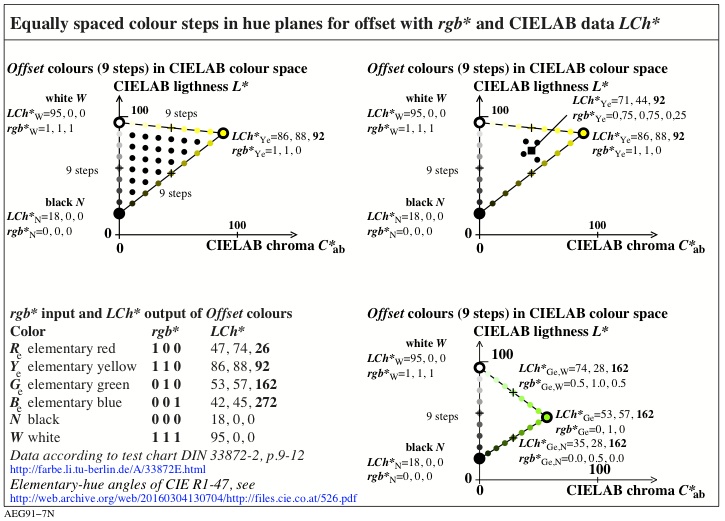
Fig. 1 - Equally spaced colour steps in hue planes
for offset with rgb* and
CIELAB LCh* values
For the download of this Figure in the VG-PDF format, see
AEG91-7N.PDF.
The figure includes colour samples in hue planes
with the coordinates L*C*ab.
The elementary hue planes Yellow Ye and Green Ge for standard
offset are shown.
If an LCh*-value set is given, then for example
the four most adjacent LCh*
values can be determined, see top right.
Then the rgb* values for the intended LCh*
output values can be calculated
by interpolation. Fast calculation methods were described by Witt (2007),
see
http://farbe.li.tu-berlin.de/A/WITT07.PDF.
They were used by Richter (2016) in CIE R8-09:2015,
see with the same technical content
http://farbe.li.tu-berlin.de/OUTLIN16_01.PDF.
3. Eight device colours RYGCBMNW of the Television Luminous Systems
TLS00 to TLS70 for eight reflections of the ambient light
according to ISO 9241-306;
ISO-rgb*, CIE-XYZxy, CIELAB-LabC*h, and
LABJND-L*ABCh-output data of sRGB colours.
The CIE-XYZ data of the sRGB-display device
according to IEC 61966-2-1 are changed by the ambient light.
The refection of the
ambient light can be described by the percentage compared to the white
screen. This percentage increases form cero in a dark room via
the standard case 2,5% in offices according to ISO 9241-306 up to
40%, if the luminance of the daylight
and of the projector white is equal on the projector sreen.
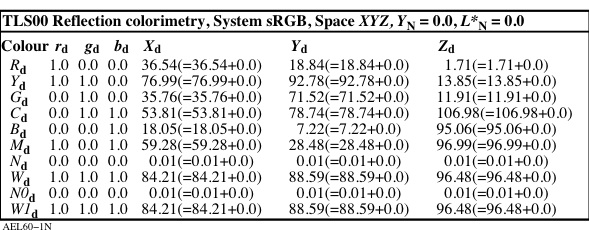
Fig. 2 - TLS00 Reflection geometry with 0% reflection
on the sRGB device
For the download of this Figure in the VG-PDF format, see
AEL60-1N.PDF.
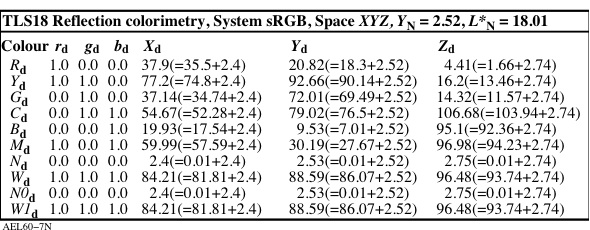
Fig. 3 - TLS18 Reflection geometry with 2,52% reflection
on the sRGB device
For the download of this Figure in the VG-PDF format, see
AEL60-7N.PDF.
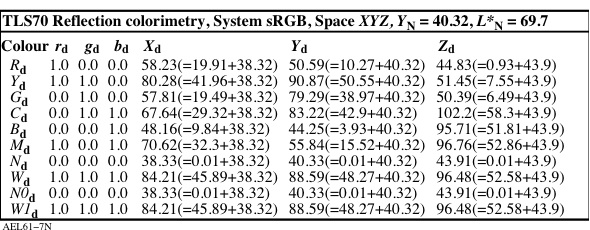
Fig. 4 - TLS070 Reflection geometry with 40,32% reflection
on the sRGB device
For the download of this Figure in the VG-PDF format, see
AEL61-7N.PDF.
The figures 2 to 4 show the changes of XYZ
for the basic and mixture colors of the sRGB device.
It must be mentioned that the tristimulus value
of white increases by the reflected light.
The new XYZ data are then normalized
as before for white to Y=88,59.
The mathematics of this reflection colorimetry will be described separately.
This is done in the linear chromatic value space CIE-LABJND of CIE 230:2019.
The letters JND indicates that this space is used to describe the
Just Noticeable Difference of colours by a colour difference formula.
The next figures 5 to 7 show the LabC*h data of CIELAB.
The following figures 8 to 10 show the L*ABCh data of LABJND.
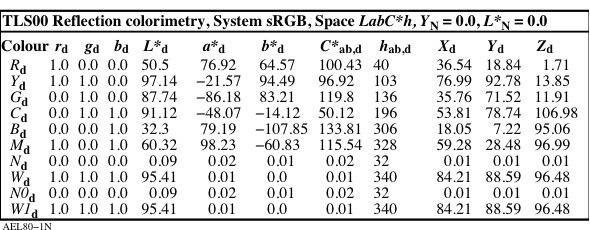
Fig. 5 - TLS00 Reflection geometry with 0% reflection
on the sRGB device
For the download of this Figure in the VG-PDF format, see
AEL80-1N.PDF.
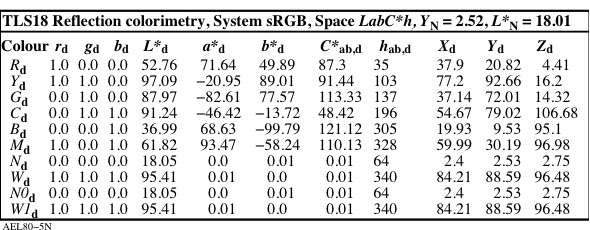
Fig. 6 - TLS18 Reflection geometry with 2,5% reflection
on the sRGB device
For the download of this Figure in the VG-PDF format, see
AEL80-5N.PDF.
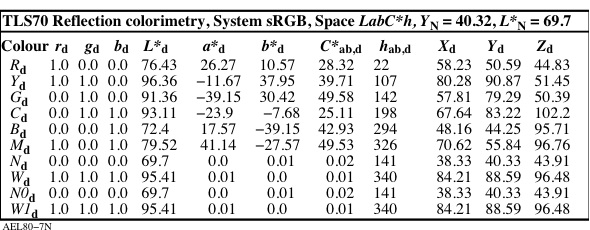
Fig. 7 - TLS70 Reflection geometry with 40% reflection
on the sRGB device
For the download of this Figure in the VG-PDF format, see
AEL80-7N.PDF.
The figures 5 to 7 show the new CIE-XYZ
and CIELAB-LabC*h data for the basic
and mixture colors of the sRGB device. For example the
CIELAB-C*ab data decrease by a factor three and similar
for the L* range.
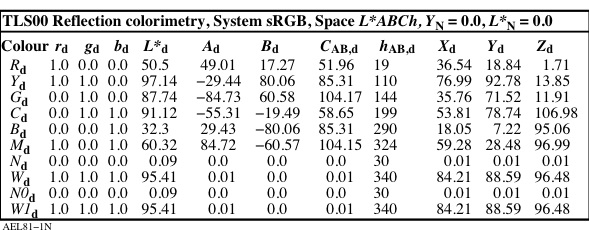
Fig. 8 - TLS00-reflection geometry with 0% reflection
on the sRGB device
For the download of this Figure in the VG-PDF format, see
AEL81-1N.PDF.

Fig. 9 - TLS18-reflection geometry with 2,5% reflection
on the sRGB device
For the download of this Figure in the VG-PDF format, see
AEL81-5N.PDF.
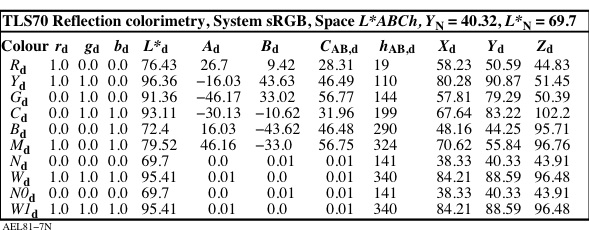
Fig. 10 - TLS70-reflection geometry with 40% reflection
on the sRGB device
For the download of this Figure in the VG-PDF format, see
AEL81-7N.PDF.
The figures 8 to 10 show the LABJND-L*ABCh data. The chromatic value
C decreases by a factor three for the case
with no reflection via 2,5% to 40% reflection.
4. Ostwald-hue circle with 16 steps; Calculation
of elementary colours
according to CIE R1-57:2015 with relative hue scaling.
The Ostwald-optimal colours are the most chromatic surface colours.
They have the reflection 1 between two complementary wavelenght.
The Ostwald colours and the antagonistic Ostwald colour
mix to white.
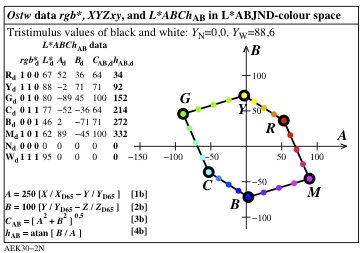
Fig. 11 - Ostwald-hue circle in the LABJND-AB
chromatic-value diagram according to CIE 230.
For the download of this Figure in the VG-PDF format, see
AEK30-2N.PDF.
The Ostwald-hue circle forms a closed curve.
The calculation of the RG and YB chromatic values A and B
is given in the figure. In the
CIE-(x,y) chromaticity diagram this antichromatic hexagon is
approximately a triangle. Among any hue circle there are four elementary
colours. Elementary red Re and green Ge are not located
on the honrizontal axis, similar is in the CIELAB-chroma diagramm (a*, b*).
All Ostwald colours are located on an antichromatic ellipse
in the chromatic value diagram (A, B). They are shown
in different diagrams in Fig. 58 of the publication
Richter (2012) Colour and Colour Vision -
Elementary Colours in Colours Information Technology, see
http://standards.iso.org/iso/9241/306/ed-2/GS15.PDF.
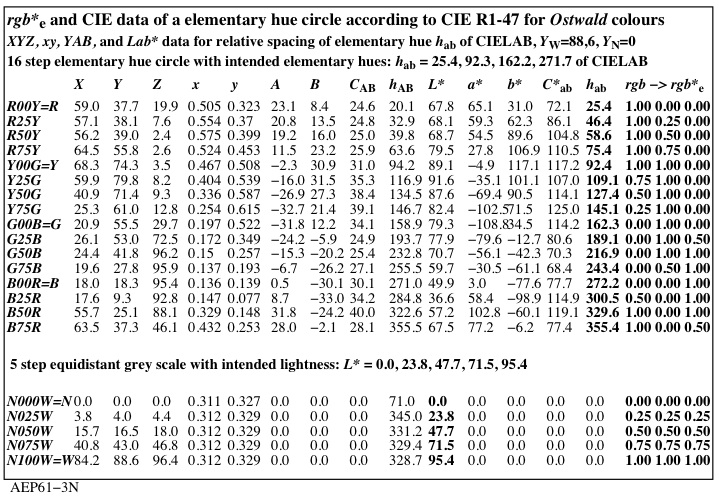
Fig. 12 - CIE-table data of the Ostwald-hue circle with the
elementary hues
For the download of this Figure in the VG-PDF format, see
AEP61-3N.PDF.
The role of the Ostwald-hue circle for the
device-independent hue output in colorimetry and image technology
is described in the Reportership Report CIE R1-57
Border between Blackish and Luminous Colours,
see (23 pages),
http://web.archive.org/web/20150413002133/http://files.cie.co.at
/716_CIE%20R1-57%20Report%20Jul-13%20v.2.pdf.
5. CIE data of eight Offset and BAM-test colours; Output in
six hue planes.
The offset colours are colours with a relative high CIELAB chroma
C*ab, and a high lightness range between L*N=18 for black
and L*W=95 for white W. The standard offset colours
White W and Black N according to ISO/IEC 15775 have
CIELAB-a*b* data which are slightly different from cero.
Therefore some kind of adaptation is necessary for the achromatic colours.

Fig. 13 - CIE-table data of the Offset-hue circle for six device
hues
For the download of this Figure in the VG-PDF format, see
AEP71-1N.PDF.
6. CIE data of the display system sRGB according to IEC 61966-2-1
(ITU-R BT.709.3) and of the display system WCGa (Wide Colour Gamut)
according to ITU-R BT.2020
for the normalizations Yw=100, and Yw=88,6.
The display system sRGB according to IEC 61966-2-1 (ITU-R BT.709.3)
plays a most important role in image technology.
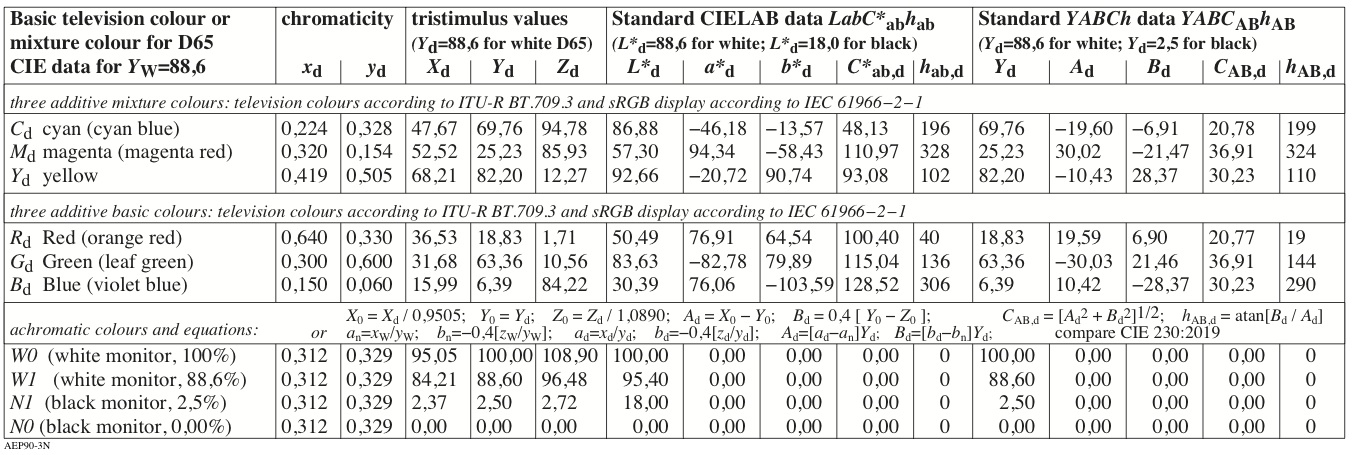
Fig. 14 - CIE-table data of the sRGB-hue circle for six device
hues
For the download of this Figure in the VG-PDF format, see
AEP90-3N.PDF.
However, the display system WCGa (Wide Colour Gamut)
according to ITU-R BT.2020 will get increasing importance in future.
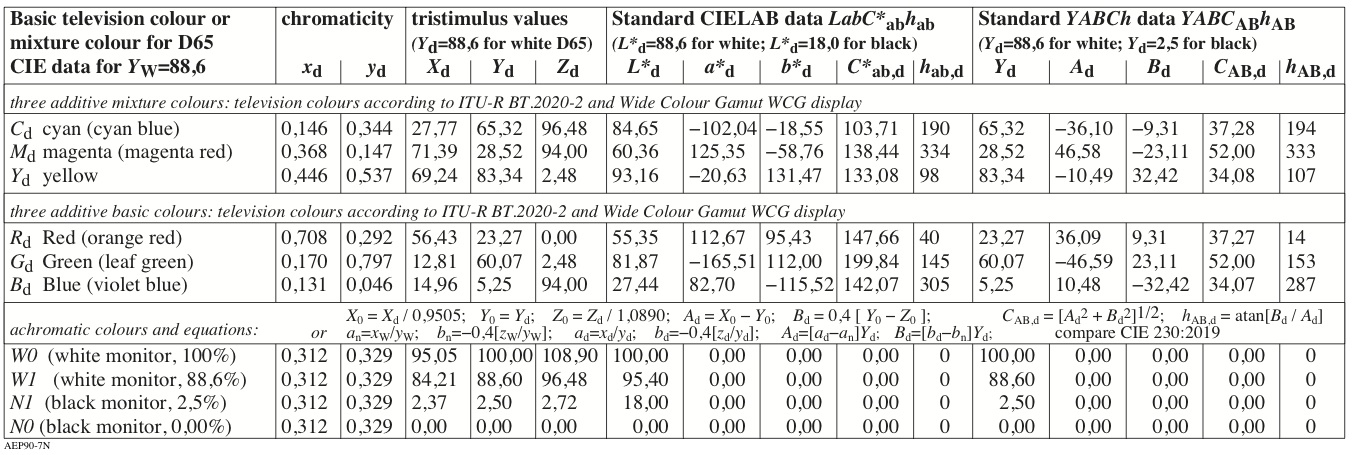
Fig. 15 - CIE-table data of the sRGB-hue circle for six device
hues
For the download of this Figure in the VG-PDF format, see
AEP90-7N.PDF.
7. CIE-XYZxy and CIELAB or LABJND data for the four devices sRGB,
WCGa, Offs, and Ostw
The colours change by different reflections of the ambien light.
The chnages are studied here for the four devices:
1. sRGB according to IEC 61966-2-1,
2. WCGa (Wide Colour Gamut) according to ITU-R BT 2020-2,
3. Offs (Standard offset print) according to ISO/IEC 15775,
4. Ostw (Ostwald-optimal colours) with a rectangular reflection.
The Ostwald colours of a colour half are anti-chromatic complementary
colours and play a special role in colour vision, see as example the table in
Figure 12 and diagrams in
AEQ8L0NP.PDF. The Ostwald colours
form an ellipse in the chromatic value diagram (A, B)
of the colour space LABJND used in CIE 230:2019.
The LABJND lightness is a logarithmic function,
and the CIELAB lightness is a cube root function
of the CIE tristimulus value Y.
If the CIELAB lightness is used, then the space of CIE 230:2019
is called L*ABJND.
Only the devices sRGB and WCGa are real display devices.
The numbers 3 and 4 are
hypothetical display devices. Number 3 may be an offset print on a tranparent
material, for example a print of the 1080 colours of the test chart AE49
according to ISO 9241-306, see
http://standards.iso.org/iso/9241/306/ed-2/AE49/AE49L0NP.PDF.
Then a D65 background produces the display colours. They are changed by
reflections of the ambient light on the transparent material.
The eight standard reflections according to ISO 9241-306:2018 are
used in tables and diagrams. Especially three display reflections
I>Yr=0,0, 2,5, and 40,3 of black N are used in diagrams of
1. CIELAB lightness and CIELAB chroma (C*ab, L*)
and (a*, b*) or
2. CIELAB lightness and L*ABJND chromatic value (CAB, L*)
and (A, B).
The changes of the lightness and the chroma or the chromatic value
are shown for two adaptations to
1. white YWa=89 on the pages AEHx, AEIx, AEJx,
and AEKx (x=0 to 3) and
2. mean grey YZa=18 on the pages AELx, AEMx, AENx,
and AEOx (x=0 to 3).
For example go to the page AEH1
and then go to other pages.
The CIELAB chroma C*ab or the LABJND chromatic value
CAB is much larger for the WCGa device compared
to the sRGB device. The Offs device has smaller values
compared to the Ostw device, see
|
space and reflection |
sRGB for adaptation to white YWa=88,6 |
sRGB for adaptation to grey YZa=18,0 |
|
CIELAB 2,5% |
AEH0L0NP.
PS /
TXT /
PDF |
AEL0L0NP.
PS /
TXT /
PDF |
|
L*ABJND 2,5% |
AEH1L0NP.
PS /
TXT /
PDF |
AEL1L0NP.
PS /
TXT /
PDF |
|
CIELAB 40,3% |
AEH2L0NP.
PS /
TXT /
PDF |
AEL2L0NP.
PS /
TXT /
PDF |
|
L*ABJND 40,3% |
AEH3L0NP.
PS /
TXT /
PDF |
AEL3L0NP.
PS /
TXT /
PDF |
Table 1 - Diagrams and tables for the sRGB device
|
space and reflection |
WCGa for adaptation to white YWa=88,6 |
WCGa for adaptation to grey YZa=18,0 |
|
CIELAB 2,5% |
AEI0L0NP.
PS /
TXT /
PDF |
AEM0L0NP.
PS /
TXT /
PDF |
|
L*ABJND 2,5% |
AEI1L0NP.
PS /
TXT /
PDF |
AEM1L0NP.
PS /
TXT /
PDF |
|
CIELAB 40,3% |
AEI2L0NP.
PS /
TXT /
PDF |
AEM2L0NP.
PS /
TXT /
PDF |
|
L*ABJND 40,3% |
AEI3L0NP.
PS /
TXT /
PDF |
AEM3L0NP.
PS /
TXT /
PDF |
Table 2 - Diagrams and tables for the WCGa device
|
space and reflection |
Offs for adaptation to white YWa=88,6 |
Offs for adaptation to grey YZa=18,0 |
|
CIELAB 2,5% |
AEJ0L0NP.
PS /
TXT /
PDF |
AEN0L0NP.
PS /
TXT /
PDF |
|
L*ABJND 2,5% |
AEJ1L0NP.
PS /
TXT /
PDF |
AEN1L0NP.
PS /
TXT /
PDF |
|
CIELAB 40,3% |
AEJ2L0NP.
PS /
TXT /
PDF |
AEN2L0NP.
PS /
TXT /
PDF |
|
L*ABJND 40,3% |
AEJ3L0NP.
PS /
TXT /
PDF |
AEN3L0NP.
PS /
TXT /
PDF |
Table 3 - Diagrams and tables for the Offs device
|
space and reflection |
Ostw for adaptation to white YWa=88,6 |
Ostw for adaptation to grey YZa=18,0 |
|
CIELAB 2,5% |
AEK0L0NP.
PS /
TXT /
PDF |
AEO0L0NP.
PS /
TXT /
PDF |
|
L*ABJND 2,5% |
AEK1L0NP.
PS /
TXT /
PDF |
AEO1L0NP.
PS /
TXT /
PDF |
|
CIELAB 40,3% |
AEK2L0NP.
PS /
TXT /
PDF |
AEO2L0NP.
PS /
TXT /
PDF |
|
L*ABJND 40,3% |
AEK3L0NP.
PS /
TXT /
PDF |
AEO3L0NP.
PS /
TXT /
PDF |
Table 4 - Diagrams and tables for the Ostw device
The tables 1 to 4 show links to the PDF files
of the four devices sRGB, WCGa, Offs, and Ostw.
For additional files of the sRGB device, see
AEHI.HTM and AELI.HTM.
For additional files of the WCGa device, see
AEII.HTM and AEMI.HTM.
For additional files of the Offs device, see
AEJI.HTM and AENI.HTM.
For additional files of the Ostw device, see
AEKI.HTM and AEOI.HTM.
-------
For the archive information (2000-2009) of the BAM server "www.ps.bam.de"
(2000-2018)
about colour test charts, colorimetric calculations,
standards, and publications, see
indexAE.html in English,
indexAG.html in German.
Back to the main page of this TUB web site (NOT archive), see
index.html in English,
indexDE.html in German.













